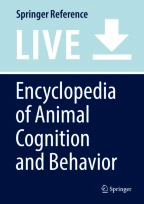Synonyms
Definition
A reproductive system where individuals mature as males, but may reproduce as females later in life.
Introduction
In most animals, “males” and “females” are distinct classes of individuals that specialize in the production of sperm and eggs, respectively. However, a substantial minority of species are hermaphrodites, meaning that a single individual can produce both eggs and sperm, either simultaneously or at different stages of its life. “Protandrous” hermaphrodites begin their reproductive lives as males, but reproduce as females later in life.
Two examples help to illustrate (Fig.1). Anemonefish live in small territorial groups, where reproduction and sex change are determined by a strict dominance hierarchy (Munday et al.2006). The largest individual in the group is a breeding female, the second-largest is a breeding male, and all smaller individuals are nonbreeding males. If the female dies or is removed, then the...
This is a preview of subscription content,log in via an institution to check access.
References
Bauer, R. T. (2006). Same sexual system but variable sociobiology: Evolution of protandric simultaneous hermaphroditism inLysmata shrimps.Integrative and Comparative Biology, 46(4), 430–438.
Charnov, E. L. (1982).The theory of sex allocation. Princeton: Princeton University Press.
Collin, R. (2013). Phylogenetic patterns and phenotypic plasticity of molluscan sexual systems.Integrative and Comparative Biology, 53(4), 723–735.
Frisch, A. (2004). Sex-change and gonadal steroids in sequentially-hermaphroditic teleost fish.Reviews in Fish Biology and Fisheries, 14(4), 481–499.
Kazancıoğlu, E., & Alonzo, S. (2009). Costs of changing sex do not explain why sequential hermaphroditism is rare.The American Naturalist, 173(3), 327–336.
Leonard, J. L. (2013). Williams’ paradox and the role of phenotypic plasticity in sexual systems.Integrative and Comparative Biology, 53(4), 671–688.
Munday, P. L., Buston, P. M., & Warner, R. R. (2006). Diversity and flexibility of sex change strategies in animals.Trends in Ecology and Evolution, 21(1), 89–95.
Policansky, D. (1982). Sex change in plants and animals.Annual Review of Ecology and Systematics, 13, 471–495.
Sadovy de Mitcheson, Y., & Liu, M. (2008). Functional hermaphroditism in teleosts.Fish and Fisheries, 9(1), 1–43.
Simpson, S.D., Harrison, H.B., Claereboudt, M.R., & Planes, S. (2014). Long-distance dispersal via ocean currents connects Omani clownfish populations throughout entire species range. PLoS ONE 9(9), e107610.
Warner, R. R. (1975). The adaptive significance of sequential hermaphroditism in animals.The American Naturalist, 109(965), 61–82.
Author information
Authors and Affiliations
Division of Ecology and Evolution, Research School of Biology, The Australian National University, Canberra, ACT, Australia
Jonathan M. Henshaw
- Jonathan M. Henshaw
You can also search for this author inPubMed Google Scholar
Corresponding author
Correspondence toJonathan M. Henshaw.
Editor information
Editors and Affiliations
Oakland University , Rochester, Michigan, USA
Jennifer Vonk
Department of Psychology, Oakland University Department of Psychology, Rochester, Michigan, USA
Todd Shackelford
Section Editor information
Laboratory of Comparative Ethology, Eunice Kennedy Shriver National Institute of Child Health and Human Development, Poolesville, MD, USA
Annika Paukner
Rights and permissions
Copyright information
© 2018 Springer International Publishing AG
About this entry
Cite this entry
Henshaw, J.M. (2018). Protandrous Hermaphroditism. In: Vonk, J., Shackelford, T. (eds) Encyclopedia of Animal Cognition and Behavior. Springer, Cham. https://doi.org/10.1007/978-3-319-47829-6_1972-1
Download citation
Received:
Accepted:
Published:
Publisher Name:Springer, Cham
Print ISBN:978-3-319-47829-6
Online ISBN:978-3-319-47829-6
eBook Packages:Living Reference Behavioral Science and PsychologyReference Module Humanities and Social SciencesReference Module Business, Economics and Social Sciences
